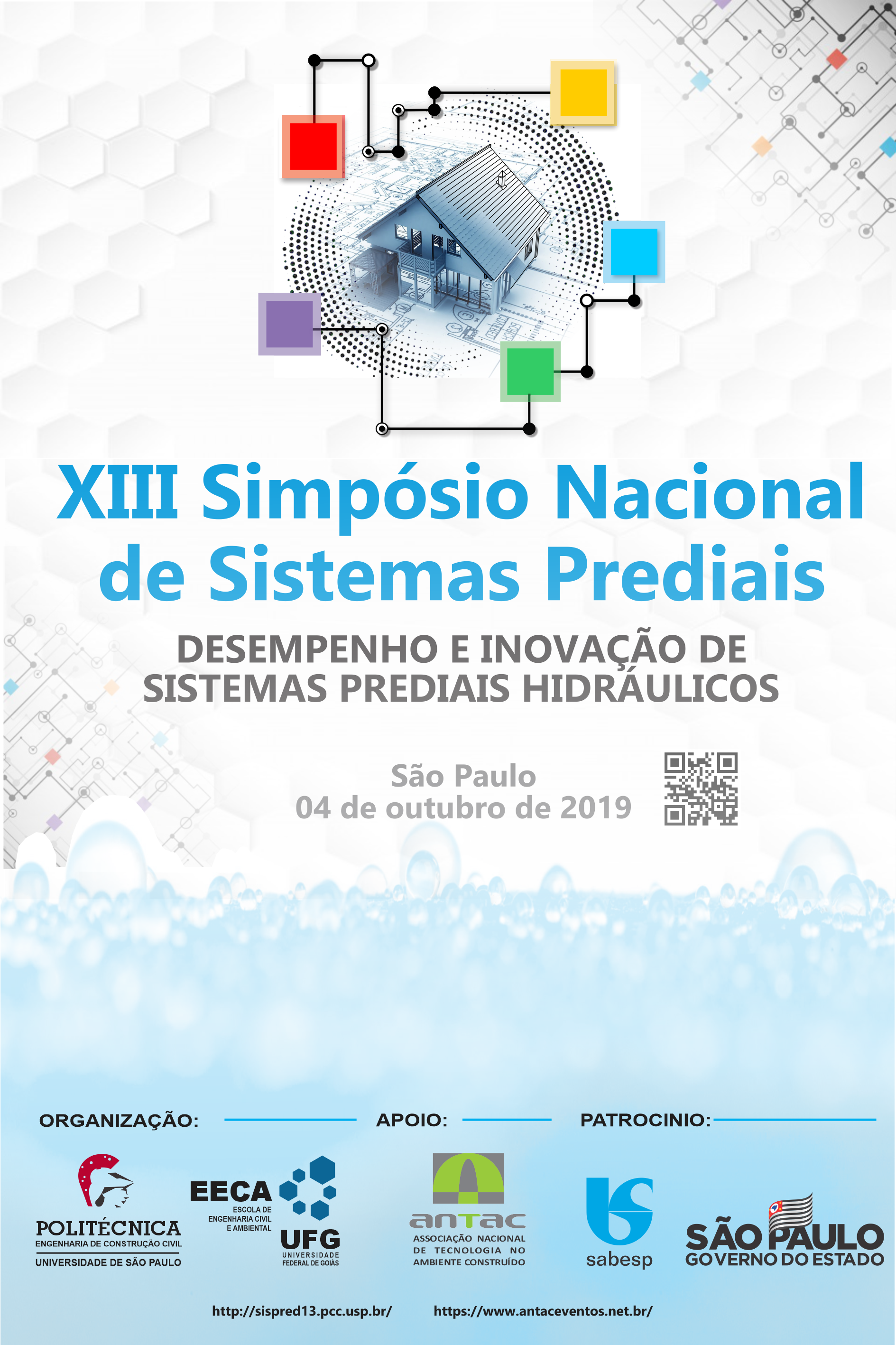Evaluation of decentralized non-potable water production and centralized water production in SPMR
DOI:
https://doi.org/10.46421/sispred.v1i.1560Keywords:
Non-potable water system, Centralized drinking water system, Decision makingAbstract
ABSTRACT: The population in Brazil will reach its peak approximately in the year 2050, until then, the demand for natural resources will grow, especially water. Population densification reduces per capita water availability, as well as impairing the quality of water sources. The aim of this article is to apply a mathematical model to evaluate if the use of non-potable water systems can be an economically viable alternative source in relation to the expansion of the centralized drinking water system. Non-potable water can meet a portion of the demand for domestic uses, the approximate proportion of 80% of drinking water consumption and 20% of consumption can be considered for purposes that do not require potable water. Bibliographic review was carried out and costs were collected for the construction, operation and maintenance of a decentralized individual non-potable water production system and the São Lourenço production system. The mathematical model was formulated and applied under the collected data, which were adjusted to take into account the gain resulting from the large-scale use of non-potable water systems. The results indicate that the production of non-potable water in buildings has less economic viability compared to SPSL in the evaluated scenario
Downloads
References
AGÊNCIA NACIONAL DE ENERGIA ELÉTRICA (ANEEL). Tarifa de energia ELETROPAULO - 2003. Disponível em: <http://www.energetica.eng.br/wa_files/ Tarifas_202003_20-_202005.pdf>. Acesso em: 20 de outubro de 2018.
AGÊNCIA NACIONAL DE ENERGIA ELÉTRICA (ANEEL). Tarifa de energia ELETROPAULO - 2018. Disponível em: <http://www2.aneel.gov.br/cedoc/ reh20182412ti.pdf>. Acesso em: 20 de outubro de 2018e.
AGÊNCIA NACIONAL DE ÁGUAS (ANA). Disponibilidade e Demandas de Recursos Hídricos no Brasil – Caderno de Recursos Hídricos 2. Brasília, 2007.
DAIGER, G.T. Evolving Urban Water and Residuals Management Paradigms: Water Reclamation and Reuse, Decentralization and Resource Recovery. Water Environment Research, v. 81:8, p. 809-823, 2009.
DIAS C.M., Modelos para a tomada de decisão quanto ao tipo de sistema predial de água não potável. 2017. 221 p. Dissertação – Escola Politécnica da Universidade de São Paulo, São Paulo, 28 de abril de 2017.
DIAS, C. M.; OLIVEIRA, L. H.; KOROKAWA, F. A. A mathematical model for decision-making of a non-potable water system in residential buildings: decentralized in clusters or individual decentralized? International Symposium of CIB W062, v.1, p.283-293, 2017b.
GUO, T; ENGLEHARDT, J.D.; WU, T. Review of cost versus scale: water and wastewater treatment and reuse processes. Water Science & Technology. v. 69, p. 223-234. 2014.
MARQUES, I. G.; OLIVEIRA L. H., Padronização de terminologia e de conceitos de sistemas prediais de água não potável. Conselho Brasileiro de Construção Sustentável (CBCS). São Paulo, 2014. 9 p.
OLIVEIRA, L. H., GONÇALVES O. M., Metodologia para implantação de programa de uso racional da água em edifícios. 1a ed. São Paulo; EPUSP-PCC, 1999. 18 p.
OLIVEIRA, L. H.; CORRÊA F. R.; SANTOS, M. O. Sistemas de água não potável: centralizados ou descentralizados? Revista Hydro, v. 88, p. 54-57, 2014.
ORGANIZAÇÃO DAS NAÇÕES UNIDAS (ONU). Novo estudo da ONU indica que mundo terá 11 bilhões de habitantes em 2100. Disponível em: . Acesso em: 05 de setembro de 2016.
PATUCCI, R. P.; OLIVEIRA, L. H.; KUROKAWA, F. A.; MIELLI, V. G. Tomada de decisão entre a produção de água não potável em edifícios residenciais e água potável no Sistema Produtor São Lourenço. In: Encontro Nacional de Tecnologia do Ambiente Construído, 18., 2018, São Paulo. Anais... Foz do Iguaçu: ENTAC, 2018.
PORTAL BRASIL. Índice Geral de Preços do Mercado. Disponível em: <https://www.portalbrasil.net/igpm.htm>. Acesso em: 6 de junho de 2018.
SAUTCHÚK, C. A. et al. Conservação e reuso da água em edificações. São Paulo, 2005, 152 p. Disponível em: <http://www.fiesp.com.br/indices-pesquisas-e-publicacoes/conservacao-e-reuso-de-aguas-em-edificacoes-2005>. Acesso em 25 de agosto de 2017.
SISTEMA NACIONAL DE INFORMAÇÕES SOBRE SANEAMENTO (SNIS). Diagnóstico dos serviços de água e esgotos – 2015. Disponível em: <http://www.snis.gov.br/diagnostico-agua-e-esgotos/diagnostico-ae-2015>. Acesso em: 2 nov. 2017.

